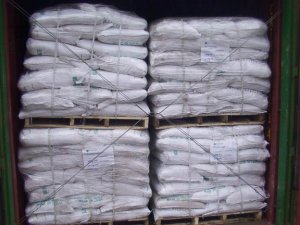Sodium Tripolyphosphate — STPP
Information
- IUPAC name: Pentasodium triphosphate
- Other names: polygon, STPP
Identifiers - Chemical Formula: Na5P3O10
- CAS Number: 7758-29-4
- ECHA InfoCard 100.028.944
Technical Grade STPP
Technical-grade STPP is primarily used as a key ingredient in commercial detergents. It functions as a builder and also acts as a water softener in detergent formulations.
In areas where water contains high concentrations of Mg²⁺ and Ca²⁺ ions, detergents can lose effectiveness.
As a highly charged chelating agent, TPP⁵⁻ binds strongly to these divalent cations, preventing them from interfering with the sulfonate-based detergent components.
Food Grade STPP
Food-grade STPP (sodium tripolyphosphate) is widely used in various food products, including canned or fruit juice beverages, vegetable protein drinks, dairy products, poultry and meat products, ice cream, instant noodles, canned foods, and condensed milk.
When used in combination with sodium pyrophosphate or sodium triphosphate, it is also suitable for producing ham and smoked meats.
In addition, food-grade STPP is commonly used in the production of canned broad beans to soften the bean skins. Many fruits and vegetables develop tougher outer skins as they mature.
During processing, adding polyphosphates to blanching or soaking water can chelate calcium ions, effectively reducing skin toughness.
For instance, when pre-boiling broad beans, adding an appropriate amount of sodium tripolyphosphate and sodium hexametaphosphate and boiling for 10–20 minutes helps soften the skins.
Overall, food-grade STPP serves as a valuable multifunctional additive in the food industry, acting as a water-retention agent, quality improver, pH regulator, and metal chelating agent.


